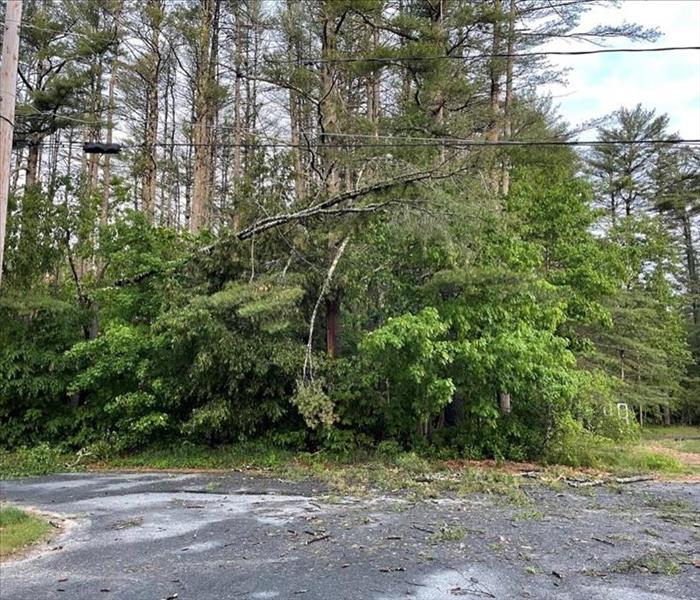Facts About Microbursts
7/7/2021 (Permalink)
 High winds can mean a dangerous environment causing tree limbs and branches to fall. Be sure to take necessary safety precautions.
High winds can mean a dangerous environment causing tree limbs and branches to fall. Be sure to take necessary safety precautions.
From heavy snow, freezing temps, and icy conditions in the winter, to high heat, hard rain and flooding in the summer, New England sees all kinds of treacherous weather. Another weather event that is not uncommon in the Northeast are what are called "microbursts."
- Microbursts are normally short in duration but are very intense.
- Microbursts occur when very high winds descend from rain clouds towards the ground and disperse horizontally.
- As previously mentioned, microbursts do not last long and typically pass after 10-15 minutes. Sometimes even shorter.
- A Microburst can cause damage, ordinarily, within a 1/2 mile- 2-mile diameter.
- Heavy winds are a characteristic most commonly associated with a microburst but can also include thunderstorms and heavy rain.
- Microbursts were only first observed in 1974 and the physics of them is still not completely understood.
- Microbursts are particularly threatening to airplanes, specifically during takeoff and landing.
Of course, with high winds comes the threat of down trees, limbs, and other airborne debris. Be sure to get to a safe area whenever a threat of a microburst arises.





 24/7 Emergency Service
24/7 Emergency Service